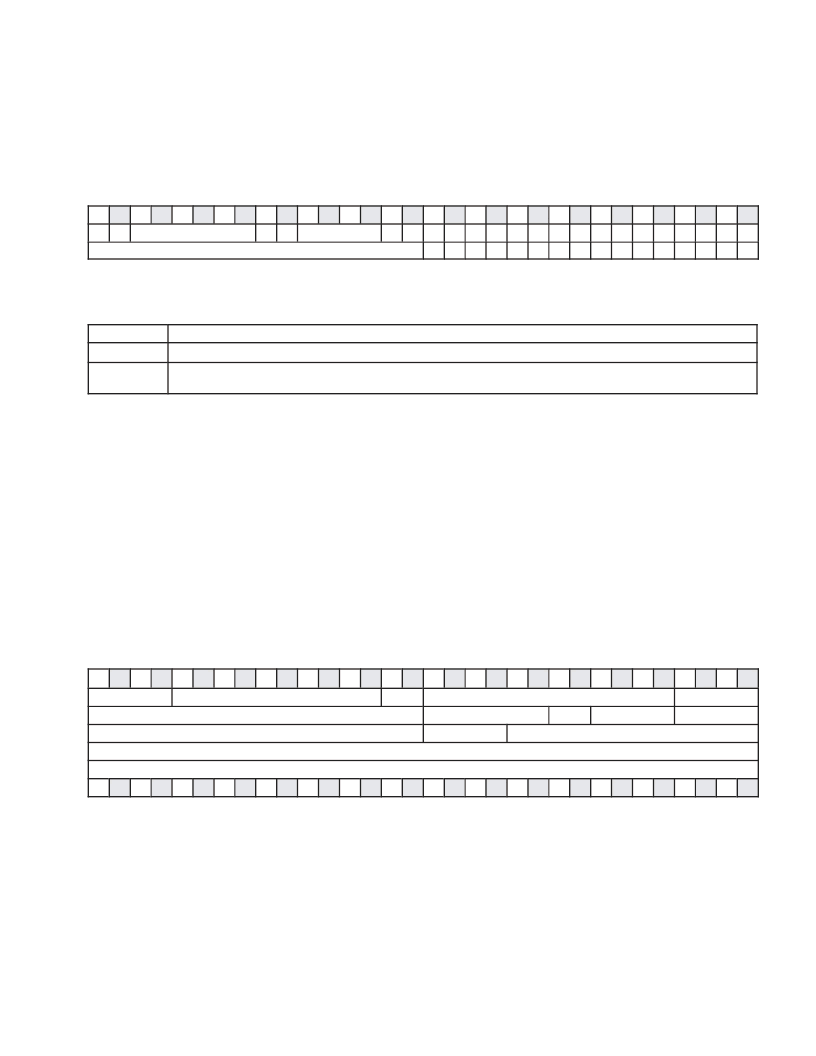- 您現(xiàn)在的位置:買賣IC網(wǎng) > PDF目錄385949 > TSB43AA82A1 (Texas Instruments, Inc.) 1394 integrated PHY and link layer controller(1394集成PHY和鏈路層控制器) PDF資料下載
參數(shù)資料
| 型號: | TSB43AA82A1 |
| 廠商: | Texas Instruments, Inc. |
| 英文描述: | 1394 integrated PHY and link layer controller(1394集成PHY和鏈路層控制器) |
| 中文描述: | 1394綜合物理層和鏈路層控制器(1394集成物理層和鏈路層控制器) |
| 文件頁數(shù): | 73/146頁 |
| 文件大小: | 597K |
| 代理商: | TSB43AA82A1 |
第1頁第2頁第3頁第4頁第5頁第6頁第7頁第8頁第9頁第10頁第11頁第12頁第13頁第14頁第15頁第16頁第17頁第18頁第19頁第20頁第21頁第22頁第23頁第24頁第25頁第26頁第27頁第28頁第29頁第30頁第31頁第32頁第33頁第34頁第35頁第36頁第37頁第38頁第39頁第40頁第41頁第42頁第43頁第44頁第45頁第46頁第47頁第48頁第49頁第50頁第51頁第52頁第53頁第54頁第55頁第56頁第57頁第58頁第59頁第60頁第61頁第62頁第63頁第64頁第65頁第66頁第67頁第68頁第69頁第70頁第71頁第72頁當前第73頁第74頁第75頁第76頁第77頁第78頁第79頁第80頁第81頁第82頁第83頁第84頁第85頁第86頁第87頁第88頁第89頁第90頁第91頁第92頁第93頁第94頁第95頁第96頁第97頁第98頁第99頁第100頁第101頁第102頁第103頁第104頁第105頁第106頁第107頁第108頁第109頁第110頁第111頁第112頁第113頁第114頁第115頁第116頁第117頁第118頁第119頁第120頁第121頁第122頁第123頁第124頁第125頁第126頁第127頁第128頁第129頁第130頁第131頁第132頁第133頁第134頁第135頁第136頁第137頁第138頁第139頁第140頁第141頁第142頁第143頁第144頁第145頁第146頁

47
4.3.2.5 Resume Packet
The reception of the resume packet, shown in Figure 48, causes any node to resume operations for all PHY ports
that are both connected and suspended. This is equivalent to setting the resume variable TRUE for each of these
ports. The resume packet is a broadcast packet, there is no reply. Field descriptions for the resume packet are shown
in Table 47.
0
1
2
3
4
5
6
7
8
9
10 11
12 13
14 15
16 17
18 19
20 21
22 23
24 25
26 27
28 29
30 31
0
0
PHY_ID
0
0
Type (Fh)
0
0
0
0
0
0
0
0
0
0
1
1
1
0
0
0
0
0
Logical inverse of first quadlet
1
1
1
1
1
1
1
1
1
1
1
1
1
1
1
1
Figure 48. Resume Packet
Table 47. Resume Packet Descriptions
FIELD NAME
DESCRIPTION
PHY_ID
Physical node identifier of the destination of this packet
Type
Extended PHY packet type
Fh - indicates resume packet
4.4
Asynchronous Receive FIFO (ARF)
Asynchronous receive refers to the use of the ARF interface. It is configurable in register 30h (ARF status register).
The ARF receives the response of packets transmitted from the ATF. The ARF also receives request packets from
other nodes, except packets meant for the agent. The received packets are stored in ARF FIFO in the format
described below. The host accesses the packets in the ARF through register 80h.
4.4.1
Generic Quadlet and Block Receive
The quadlet-receive format is shown in Figure 49. The first quadlet is a packet token and contains packet-control
information. The first 16 bits of the second quadlet contain the destination bus and node number, and the remaining
16 bits contain packet-control information. The first 16 bits of the third quadlet contain the bus and node number of
the source, and the unreserved 4 bits of the third quadlet contain packet-control information. The fifth quadlet contains
data that was used by write requests and read responses. For read requests and write responses, the quadlet data
field is omitted.
0
1
2
3
4
5
6
7
8
9
10 11
12 13
14 15
16 17
18 19
20 21
22 23
24 25
26 27
28 29
30 31
status
Reserved
spd
Reserved
ack
destination ID
tLabel
rt
tCode
prior
source ID
rCode
Reserved
Reserved
quadlet data
14 15
0
1
2
3
4
5
6
7
8
9
10 11
12 13
16 17
18 19
20 21
22 23
24 25
26 27
28 29
30 31
Figure 49. Generic Receive Format of Packet With Quadlet Data
The block-receive format is shown in Figure 410 and field descriptions are shown in Table 48. The first quadlet is
a packet token and contains packet-control information. The first 16 bits of the second quadlet contain the bus and
node number of the destination node, and the last 16 bits contain packet-control information. The first 16 bits of the
third quadlet contain the bus and node number of the source node, and the last 16 bits of the third quadlet and all
of the fourth quadlet contain the 48-bit, quadlet-aligned destination offset address. All remaining quadlets contain
data that is used only for write requests and read responses. For block read requests and block write responses, the
data field is omitted.
相關(guān)PDF資料 |
PDF描述 |
|---|---|
| TSB81BA3I | IEEE 1394b THREE-PORT CABLE TRANSCEIVER/ARBITER |
| TSE-0155-32S-P1-3 | SINGLE MODE SINGLE FIBER TRANSCEIVER |
| TSL230 | PROGRAMMABLE LIGHT-TO-FREQUENCY CONVERTERS |
| TSL235(中文) | Programmable Light-To-Frequency Converter(光頻轉(zhuǎn)換器) |
| TSL245(中文) | IR Light-To-Frequency Converter(紅外光頻轉(zhuǎn)換器) |
相關(guān)代理商/技術(shù)參數(shù) |
參數(shù)描述 |
|---|---|
| TSB43AA82AI | 制造商:TI 制造商全稱:Texas Instruments 功能描述:1394 Integrated PHY and Link-Layer Controller for SBP-2 Products and DPP Products |
| TSB43AA82AIPGE | 功能描述:1394 接口集成電路 Hi Perf Integr Phy & Link Layer Chip RoHS:否 制造商:Texas Instruments 類型:Link Layer Controller 工作電源電壓: 封裝 / 箱體:LQFP 封裝:Tray |
| TSB43AA82AIPGEEP | 功能描述:1394 接口集成電路 Mil Enh Int PHY and Link-Layer Cntrlr RoHS:否 制造商:Texas Instruments 類型:Link Layer Controller 工作電源電壓: 封裝 / 箱體:LQFP 封裝:Tray |
| TSB43AA82APGE | 功能描述:1394 接口集成電路 Hi Perf Integr Phy & Link Layer Chip RoHS:否 制造商:Texas Instruments 類型:Link Layer Controller 工作電源電壓: 封裝 / 箱體:LQFP 封裝:Tray |
| TSB43AA82APGEG4 | 功能描述:1394 接口集成電路 Hi Perf Integr Phy & Link Layer Chip RoHS:否 制造商:Texas Instruments 類型:Link Layer Controller 工作電源電壓: 封裝 / 箱體:LQFP 封裝:Tray |
發(fā)布緊急采購,3分鐘左右您將得到回復(fù)。